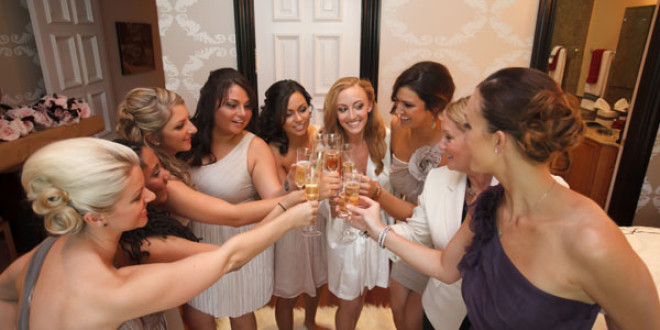[ad_1]
Whether you’re looking to alter the style of an existing gown, simply nip and tuck until it fits perfectly, or letting out a gown to work for your body type, wedding dress alterations can (almost) always be done. The key? Start early!
Finding a Seamstress
Most wedding dress shops will have a recommended seamstress, or an in-house seamstress. Remember that adjusting formal evening wear and bridal attire is much different than knowing how to sew a button, so be sure to select a professional who has years of experience in the field.
Minor Alterations
Many brides are lucky enough to find a dress that fits them nearly perfectly. In these cases, only a few minor wedding dress alterations are necessary. Still, it is a good idea to visit a qualified seamstress who specializes in wedding gowns. She’ll ensure that your dress gives you the best-fit possible – which also means the best look possible!
Alteration Variations
There are three main types of alterations that can be done to a wedding gown. The length may need to be adjusted – so hemming is the first type. The second type is bodice alterations – adjustments to ensure that the dress fits perfectly around the bride’s waist, bust, and hips. Lastly, if the gown has sleeves, they may need to be shortened.
Timing Is Everything
The secret to a successful gown altering experience is to begin early. The bride should try on the gown for the first set of alterations about two months prior to the wedding. The seamstress will inspect the gown, discuss what needs to be done, and make suggestions on what could be fine-tuned. At this point in time, the seamstress should also provide an estimate for how much the work will cost. She might also give some suggestions about bustling the dress. If the bride has any special requests, she should be sure to make them during the first fitting. The next fitting, scheduled about a month before the wedding, should have most of the major alterations done or nearly done. The final fitting, as close to the wedding as possible, will ensure that the gown fits the bride like a glove.
Remember to…
If you’re attending a fitting for your wedding gown, you should bring as many of your accessories along as possible. Most important? Shoes! If you have not yet purchased your shoes, bring along a pair that have a similar heel height – but ideally, by the time the wedding dress is being altered, the shoes should be in the bride’s possession. It is also a good idea to wear the undergarments you plan to wear on your wedding day, and bring along a veil or headdress, along with wedding day jewelry to obtain an image of how everything will look together! Bringing along a trusted friend or family member is a good idea, in case you need to make an on-the-spot decision and require a second opinion.
An ill fitting wedding dress can be extremely uncomfortable, not to mention unbecoming! Having a wedding gown altered is very common, and most brides end up attending between two and four fittings. Whether you are altering a family heirloom, a sample you found at a trunk sale, or the gown you ordered that doesn’t quite fit flawlessly, it’s a great idea to visit a seamstress at least once to make sure your wedding dress is working for you in the best way possible!

